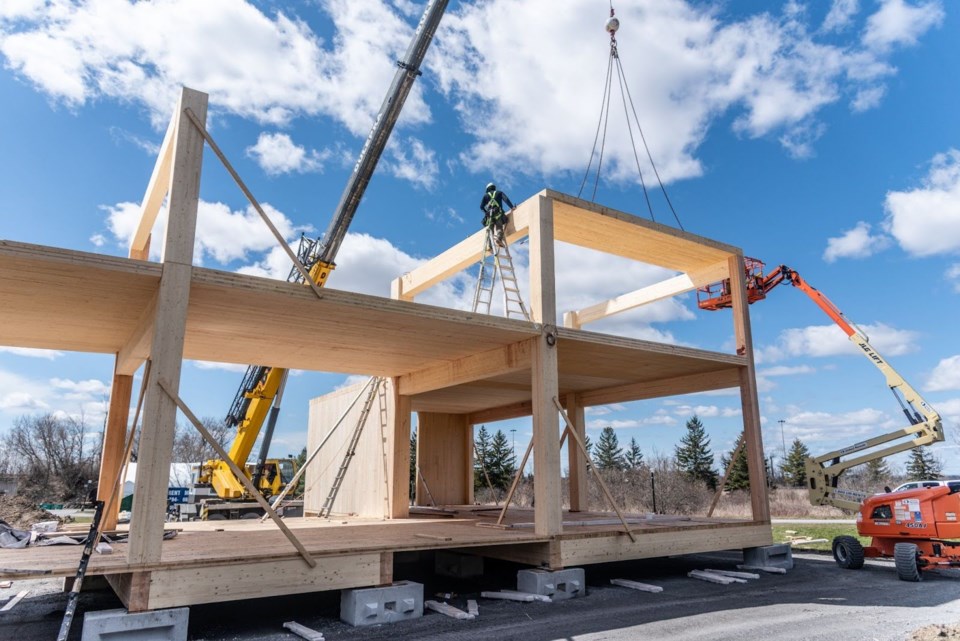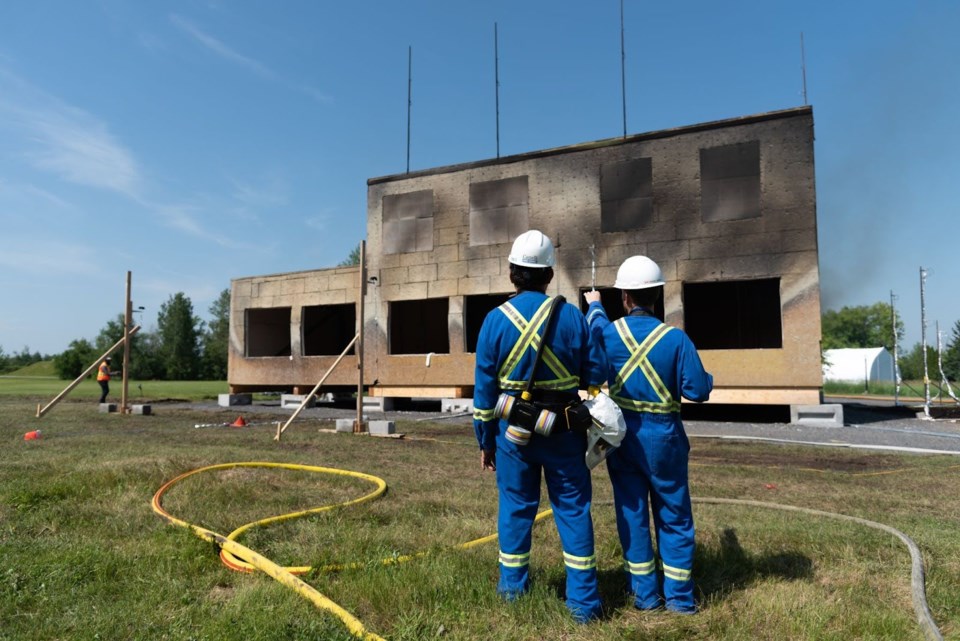In the quest for sustainable construction practices, developers and project owners are increasingly turning to mass timber as a low-carbon alternative. However, as the demand for larger and taller mass timber buildings rises, so does the need to address concerns regarding fire safety.
Civic leaders, fire and rescue services, insurance underwriters, and the public alike seek assurance that these projects meet stringent safety standards.
New research, supported by the National Research Council of Canada (NRC), Canadian Wood Council and federal and provincial governments, is validating just that. A recent series of tests, dubbed the Mass Timber Demonstration Fire Test Program show that even in worst-case fire scenarios—extremely rare conditions where sprinklers have failed and fire fighters are unable to reach the fire—mass timber buildings perform similarly to noncombustible construction.
Are bigger and taller mass timber buildings fire safe?
Amidst calls to combat climate change through sustainable construction, mass timber emerges as a promising solution. The surge in announcements for taller wood buildings across British Columbia, Canada, and worldwide underscores the growing momentum behind this eco-friendly trend.
It’s not just the building industry touting mass timber’s benefits. In a recent report, Canada’s biggest bank points out that constructing taller wood buildings and swapping concrete and steel with mass timber represents a potential 12% to 25% drop in carbon emissions.
So far, Canada has successfully completed over 750 mass timber projects, with British Columbia accounting for approximately half.
To fully embrace the potential of mass timber in addressing climate and housing challenges, ongoing fire research is paramount. Shawn Keyes, Executive Director of WoodWorks BC, emphasizes the need for continued efforts to document and reassure stakeholders of mass timber's fire safety.
“In B.C., we do have a precedent of building taller wood buildings in several jurisdictions through an alternate solution process. Taller, more dense mass timber buildings can help play a greater role in addressing both climate and affordable housing challenges,” Keyes says. “However, to open this market further, we need to support ongoing fire research, like the Mass Timber Demonstration Fire Test program, to reassure stakeholders and to further document mass timber’s fire safety.
“This can help support the evolution of the building code at the national and provincial levels to allow for even taller mass timber buildings.”

Keyes points out this recent series of mass timber fire tests adds to a growing body of research proving that low-carbon, engineered wood products are fire safe. In the event of a fire, previous testing has shown mass timber products char on the outside, forming a protective layer for the unburned wood below the char layer, which retains structural strength.
For example, in a previous fire resistance test, when a mass timber panel (5-ply, cross-laminated timber) wall was subjected to extremely high temperatures in a standard fire scenario, its structural capacity withstood the exposure for over three hours—longer than building codes require. This was the case even when it was not encapsulated with a fire-resistive layer.
As the evidence mounts, it becomes increasingly clear that mass timber stands as a viable, fire-safe alternative in construction. A recent series of fire tests adds to a robust body of research showcasing the resilience of engineered wood products under extreme conditions. With charred surfaces providing protective layers and retaining structural strength, mass timber demonstrates its capacity to meet and exceed fire safety standards. Wood engineering and fire experts believe this latest round of fire tests provides strong evidence that the code can further evolve to allow for more exposed wood and taller mass timber buildings.
B.C. is a leader in mass timber, with legislation that incentivizes the use of wood in publicly funded buildings. The provincial building code permits the construction of six-storey wood-frame and mass timber residential buildings and some municipalities have adopted the 2020 National Building Code which permits the construction of 12-storey mass timber buildings.
“This new series of fire testing shows that taller wood buildings, including those with exposed timber, do achieve fire safety standards and provide good fire performance, comparable to other building materials. They provide strong evidence to evolve the National Building Code,” explains Marc Alam, Senior Manager, Codes and Standards for the Canadian Wood Council.
Stay informed about the evolving landscape of mass timber construction and its implications for safety, sustainability, and regulatory standards. Join the conversation at www.naturallywood.com and explore how mass timber can shape the future of construction while addressing pressing environmental challenges.




